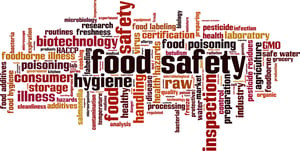 Meeting the requirements of the Global Food Safety Initiative’s (GFSI’s) optional certification can be very demanding. However, qualifying for GFSI certification can provide numerous benefits for businesses in the food industry, including:
Meeting the requirements of the Global Food Safety Initiative’s (GFSI’s) optional certification can be very demanding. However, qualifying for GFSI certification can provide numerous benefits for businesses in the food industry, including:
- Increasing food safety
- Opening up new business opportunities
- Reduced duplication of audits (since many companies accept certificates from implemented food safety management plans)
- Increased consumer confidence
To qualify for a GFSI certification, businesses in the food industry have to complete a few basic steps first, including performing a gap analysis of their food safety management practices.
What is a Gap Analysis?
Put simply, a gap analysis is a process by which you review your food safety and quality management guidelines/procedures and examine it for any gaps or deficiencies prior to applying for a GFSI certification audit.
A gap analysis provides companies in the food industry with a basis of assessing the effectiveness of their current procedures and how they could be improved.
Gap audits can be done internally, but there are many GFSI certification organizations that offer the analysis as a 3rd-party service prior to running their actual audits.
Performing a Gap Analysis
There is no hard, fast rule for performing a gap analysis that crosses all subsections of the food industry.
However, most companies in the food industry could easily borrow a few key steps from the hazard analysis process for HACCP compliance, including:
- Creating a production process flowchart
- Be sure to chart EVERY step of the production process from material intake, to storage, to processing, to final packaging and crating for shipment.
- Noting any hazards inherent to the product and its ingredients
- Check for species-specific hazards in meat products
- Research ingredients and note any registered hazards
- Identifying potential process-related hazards
- Could the processing equipment introduce contaminants (metal shavings and the like)?
- Are there delays or excessive open-air exposure issues that could contribute to spoilage?
- Researching hazards and their significance
The more comprehensive your analysis is, the better. Thoroughness in this process helps you better prepare for the compliance audit by allowing to spot and resolve potential issues ahead of time.
If you’ve identified a gap in your product’s QA and safety, the next step is to enact measures to close these gaps. This could mean having review sessions with employees about food product safety, adding product inspection equipment to check for specific hazards that you’ve identified, or even redesigning elements of your production process.
While meeting optional compliance standards can be tough, the benefits your business could reap are well worth the extra time and effort.
Please contact the PLAN Automation team for help and support with GFSI Certification.




